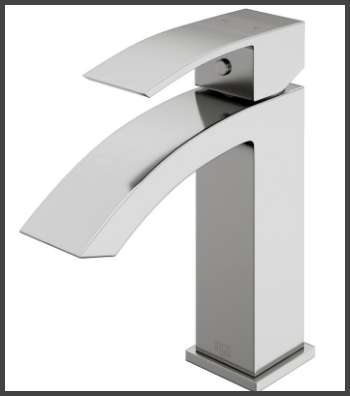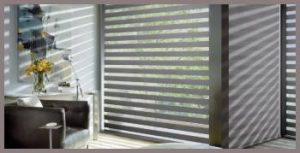The variety of choices available when choosing a faucet for your kitchen or bathroom may leave you feeling daunted. You’ll have to decide between a single hole and a three-hole faucet.
You can decide which option best suits your requirements and interests by using this in-depth analysis of each possibility.
A Brief Comparison Table
| Feature | Single Hole Faucet | 3 Hole Faucet |
| Design | Sleek and modern | Traditional to contemporary |
| Installation | Easier | More complex |
| Space Requirements | Space-saving | Takes up more space |
| Cleaning | Easier | Harder |
| Style Options | Limited | Wide range |
| Temperature Control Precision | Less precise | More precise |
| Handle Replacement | Requires entire assembly | Single handle replacement |
Understanding The Differences Between Single And 3-Hole Faucets
It’s important to comprehend the primary distinctions between single-hole and 3-hole faucets before delving into the advantages and disadvantages of each.
- Single Hole Faucet

A single hole faucet has a single hole for the spout, hot, and cold water lines.
The temperature and flow rate of the water is often controlled by a single handle on this style of faucet.
Single hole faucets are known for their sleek and modern design, making them an excellent choice for contemporary spaces.
- 3 Hole Faucet
The grip for the hot water, the handle for the cold water, and the spout everyone must fit into different holes on a 3-hole faucet, as the name says.
These faucets typically have a more traditional appearance, with separate handles for hot and cold water.
The handles and spout can either be mounted on the same base or installed separately, depending on the design.
Pros and Cons of Single Hole Faucets
Pros
- Sleek and Modern Design: Single hole faucets have a minimalist appearance, making them perfect for modern and contemporary spaces.
- Easier Installation: With just one hole to drill, single hole faucets are generally easier to install than their 3-hole counterparts.
- Space-Saving: Single hole faucets take up less space on your countertop, leaving more room for other items or simply providing a cleaner look.
- Easier Cleaning: Single hole faucets are simpler to maintain since there are fewer parts and spaces for dirt and grime to collect.
Cons
- Limited Style Options: Single hole faucets are generally associated with modern designs, so you may find fewer traditional or vintage-inspired options.
- Less Temperature Control Precision: With a single handle controlling both hot and cold water, it might be more challenging to achieve the exact water temperature you desire.
Pros and Cons of 3-Hole Faucets

Pros
- Wide Range of Style Options: 3-hole faucets come in various designs, from traditional to contemporary, offering more options to suit your personal taste and décor.
- Precise Temperature Control: Separate hot and cold water handles allow for more precise control over water temperature.
- Easier Handle Replacement: A single handle on a 3-hole faucet may be replaced if it becomes broken far more easily than the complete faucet assembly on a single-hole faucet.
Cons
- More Complex Installation: 3-hole faucets require additional drilling and plumbing work, making them more challenging to install than single hole faucets.
- Takes Up More Space: The separate handles and spout of a 3-hole faucet take up more countertop space, which may be a consideration in smaller kitchens or bathrooms.
- Harder to Clean: With more components, 3-hole faucets can be more challenging to clean, as dirt and grime can accumulate in the spaces between the handles and spout.
Also Read: Differences Between Matte Black Faucet And Brushed Nickel Faucet.
Frequently Asked Questions (FAQ)
Inherently, neither choice is superior to the other. The final decision between a single hole and a 3-hole faucet is based on your personal tastes, design objectives, and the space that is available in your kitchen or bathroom. Single hole faucets are ideal for modern and minimalist spaces, while 3-hole faucets offer more style options and precise temperature control. To decide which choice best meets your needs, weigh the above-mentioned benefits and drawbacks.
Yes, you may hide the extra holes on a 3-hole faucet with a deck plate or escutcheon and replace it with a 1-hole faucet. This plate is installed underneath the single hole faucet, covering the remaining two holes from the previous 3-hole faucet installation. This solution allows for a clean and seamless transition without the need for additional countertop work.
A single hole bathroom faucet can be considered better in certain situations, such as when you prefer a sleek and modern design, want to save space on your countertop, or prioritize easy cleaning. However, a 3-hole faucet may be a better choice if you’re looking for more style options, precise temperature control, or easier handle replacement. The “best” choice ultimately comes down to your own requirements and tastes.
Whether you choose a single (single hole) or double (3-hole) faucet depends on your personal tastes and the layout of your room. Single faucets offer a sleek and modern look, while double faucets provide more style options and precise temperature control. To choose the solution most suited to your requirements and design objectives, weigh the benefits and drawbacks of each one.
A faucet type known as an one hole faucet just needs one hole to be installed. The hot and cold water lines, as well as the faucet spout, fit into this hole. Single hole faucets typically feature a single handle that controls the water temperature and flow rate. They are known for their sleek and modern design and are often preferred in contemporary spaces.
Final Thoughts
The decision between a single hole and a 3-hole faucet ultimately boils down to personal style, design factors, and the amount of space you have in your kitchen or bathroom.
You will be able to select what best serves your needs and enhances the look and functionality of your space after carefully analyzing the benefits and drawbacks of each choice and taking into account the answers to the previously frequently asked questions.



